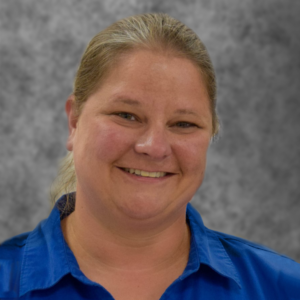Physical fitness is not just important for maintaining a healthy lifestyle. In EMS, it is…

Depression and Anxiety in the EMS Instructor
Home » 911 e-Learning News » Depression and Anxiety in the EMS Instructor

For those in any field of education, we are always monitoring our students’ behavior, moods, interactions, and life circumstances. We often receive training from our institutions regarding student support mechanisms for financial struggles, childcare, transportation, housing, and mental health concerns. Our students need our support, guidance, and mentorship. Quite honestly, as instructors in emergency services, we do this on instinct. It is in our nature to be aware of the nonverbal clues, body language, and emotional states of others to determine if they need help. It’s what we do.
But what happens when the person who is always looking out for others has their own personal struggles and mental health concerns? Who is watching us? Who will walk us across campus and advocate on our behalf to get support services in place? I’ll wait for you to answer…….ok, that’s what I thought…..crickets. It’s no secret that EMS providers see, hear, smell, and do things that will forever haunt us. Not every bad call bothers us, but the ones that do bother us REALLY stick around. Over time, we have these encounters that take little pieces of who we are and replace it with something dark and menacing, lurking in the hidden recesses of our psyche sitting in wait. We learn to compartmentalize those recesses—to shut the door to that dark place and keep the darkness at bay. It’s how we adapt and keep doing our job. The funny thing about that dark place is that once it’s there, it is exceedingly difficult to open that door and let the light dissipate the darkness. We keep it hidden. We try to ignore it. We laugh, go on vacations, enjoy time with our family and friends, but those memories are always there. Many of us develop mental health conditions such as anxiety, depression, PTSD, and suicidal ideations or attempts. The incidence of mental health conditions and suicidal ideations is markedly higher in the emergency services and military population when compared to “civilians”. That’s not to say that other people don’t suffer from the same conditions. The truth is no one is truly immune to the effects of trauma. Childhood trauma, car crashes, witnessing traumatic events, assault and violent crimes can all have the same effects on the persons who experienced them.
I’ll do something that many other EMS instructors, paramedics, and people in general may have difficulty doing. I will admit openly in a public forum that I have been diagnosed with major depressive disorder and generalized anxiety disorder. I also likely have PTSD from my career and certain life events. This is the first time I have ever put those words in writing. I struggled with them for many years before I finally was able to admit that I needed to seek treatment about 5 years ago. Even after starting a medication treatment, it took me 3 more years to tell anyone else I had those conditions. Now, five years after diagnosis, I have put those words into writing. I’ve been looking at them on my patient portal diagnosis list. They have haunted me, but simultaneously given me some validation that it’s not just all in my head, laziness, apathy, or any number of stereotypical labels we give people. Even as I write this narrative, I am not even sure if I will post it to my blog site. I frequently have current and former students come to me to talk about the things that bother them. I always listen to their story, let them cry, and try to give what words of encouragement I can. Yet, I find myself unwilling to share many of my experiences with them.
It can be difficult at times to make it through specific class sessions when your topic is related to certain calls you have been on. It’s like you continuously relive those moments each time that subject comes around on the course schedule. When I teach burns, I see and smell severely burned patients I have had. I remember the skin of a 12-year-old girl sloughing off as we tried to resuscitate her when she was pulled out of a house fire. I smell the burned flesh that lingered in my ambulance for an entire shift following a mass casualty explosion incident. When I teach pediatric resuscitation, I always relive my first infant cardiac arrest patient. I remember her name. I hear her mother’s heart-wrenching screams echoing in my head. When I teach STEMI identification and management, I am right back in the ambulance with my good friend’s father trying desperately to get him to a cath lab only to have him go into sudden cardiac arrest on us. I remember having to talk to my friend on the phone and explain everything. These things don’t go away. Everyone in the industry has stories just like these, and sometimes, much worse. When we teach, these “ghosts” if you will, are there to remind us of what we learned from each one of them.
We know our students are going to have their own ghosts. Our responsibility to them is to help them understand that it’s ok to have emotional responses to calls. It’s ok to ask for help. They need to be reassured they have trusted and dependable allies on whom they can rely. It’s ok to be vulnerable, sad, angry, depressed, and confused. What’s NOT ok is to practice “emotional quarantining” and try to compartmentalize and keep those emotions in a mental box. One of the main keys to trauma resolution is active processing. We need to teach our students how to open up and talk about these calls either in formal settings such as debriefings or informal settings like a “bay vent session”. I try to prepare my students as best I can for some of the things they may encounter. I encourage them to text or call me at any time if they need to talk. I have also started inviting the founder of a local first responder peer group and a local trauma therapist to speak to our classes. By providing students access to mental health resources and resiliency training early in their program, my hope is that they will be better able to process and cope in healthy ways as soon as they recognize that a call may bother them.
First responder mental health recognition, training, and recovery have come a long way in recent years. The stigma surrounding the need to identify and address these concerns has been somewhat reduced. However, we still have a long way to go. If we are to help change the culture for the next generation of EMS providers, we must set the precedent for education and resource availability. Make mental health topics part of your EMS education plan. Bring in specialists as guest speakers. Have resources on hand to distribute to your students. Talk about it often. Create an environment in which everyone feels safe to share what bothers them without judgement. I have lost some very close friends of mine and students to suicide. I have had students tell me they have struggled with ideations or made attempts. It breaks my heart to know that their struggle pushed them to a point in which they felt that was their only way out. But, if they trust me enough to talk to me, I will be there. I will listen. I will, and do, care. I know what it’s like. I’ve had my own struggles. But, bad times don’t last forever. It may take us a while to climb out of the valley of darkness, but the light waiting for us once we reach the summit is truly a blessing.
Credit to emsedtips.com and Christine Turner.
Christine Turner, M.Ed., NRP

Christine Turner began her EMS career in 1999 as a volunteer medical responder with her local fire department and began teaching CPR classes in 2001. By 2005, she had completed paramedic training and served several years with a county EMS agency as an FTO and Shift Captain. In 2010, she transitioned to teaching full-time at a community college. She is a Level II paramedic instructor with extensive experience with teaching seated, hybrid, and online classes as well as advising strategies for degree-seeking and transfer students. She has served as a program director and has been through accreditation processes with two community colleges.
She has completed a Bachelor of Science degree in Emergency Medical Care from Western Carolina University (Go Cats!), a Master of Education in Higher Education Leadership from Liberty University (Go Flames!), as well as a variety of NCCCS teaching and leadership training.
Christine remains an active lead paramedic instructor and program director. She enjoys collaboration, problem-solving, and developing plans for world domination. Her favorite past times are spending quality time with her family, dogs, and friends.
Christine also owns and manages EMSEd Tips – a blog that provides tips, tricks, and resources for EMS Instructors. Learn more and check it out here.
Related Posts
- Physical Fitness within EMS
- Compassion Fatigue
Compassion fatigue is a common struggle among many professionals within the medical field. Check out…
- Say What?
Are you the one that tends to say "yes" more often than not, and then…
